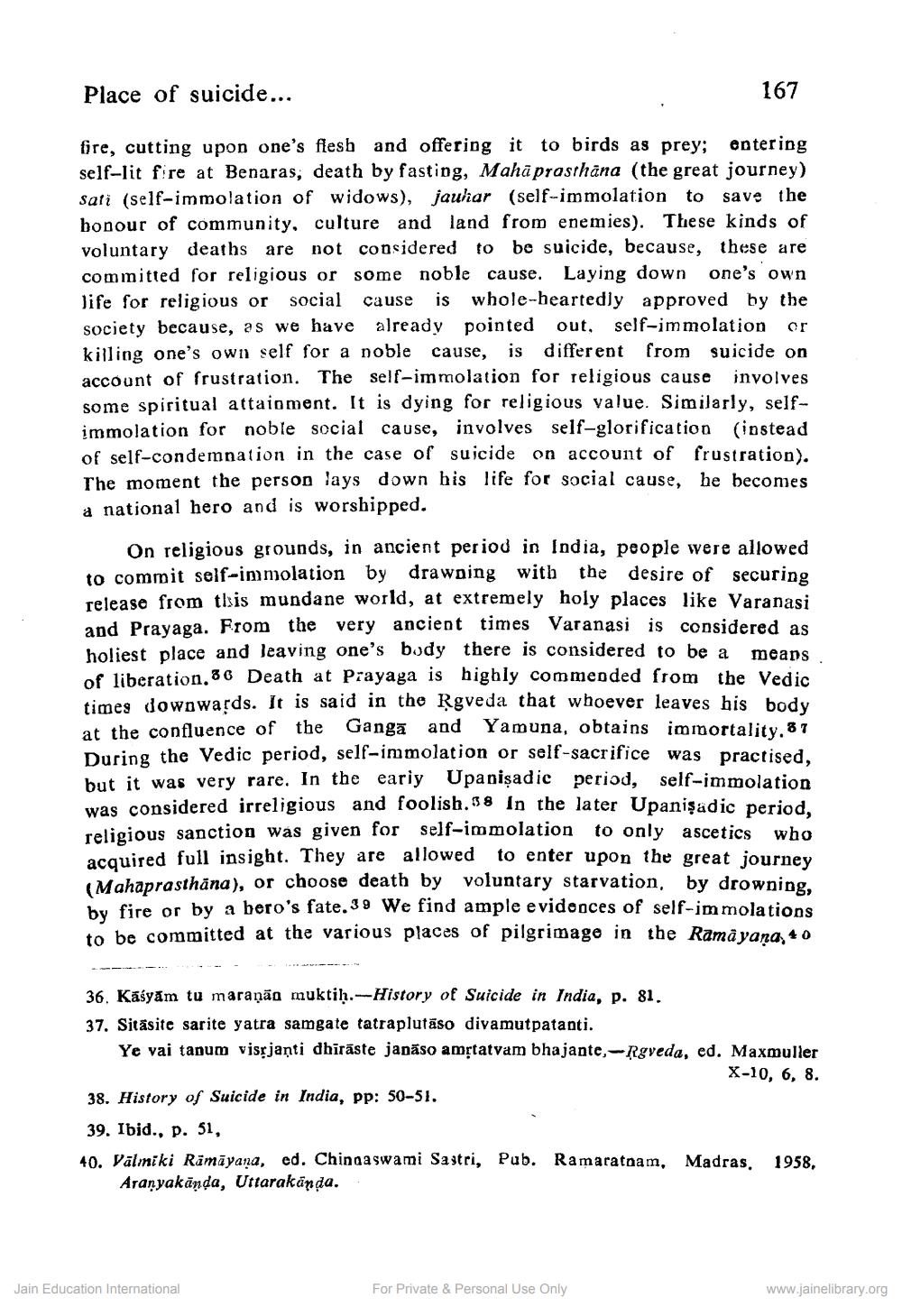________________
Place of suicide...
entering
fire, cutting upon one's flesh and offering it to birds as prey; self-lit fire at Benaras, death by fasting, Mahāprasthāna (the great journey) sati (self-immolation of widows), jauhar (self-immolation to save the bonour of community, culture and land from enemies). These kinds of voluntary deaths are not considered to be suicide, because, these are committed for religious or some noble cause. Laying down one's own life for religious or social cause is whole-heartedly approved by the society because, as we have already pointed out, self-immolation or killing one's own self for a noble cause, is different from suicide on account of frustration. The self-immolation for religious cause involves some spiritual attainment. It is dying for religious value. Similarly, selfimmolation for noble social cause, involves self-glorification (instead of self-condemnation in the case of suicide on account of frustration). The moment the person lays down his life for social cause, he becomes a national hero and is worshipped.
means
On religious grounds, in ancient period in India, people were allowed to commit self-immolation by drawning with the desire of securing release from this mundane world, at extremely holy places like Varanasi and Prayaga. From the very ancient times Varanasi is considered as holiest place and leaving one's body there is considered to be a of liberation.36 Death at Prayaga is highly commended from the Vedic times downwards. It is said in the Rgveda that whoever leaves his body at the confluence of the Ganga and Yamuna, obtains immortality.87 During the Vedic period, self-immolation or self-sacrifice was practised, but it was very rare. In the early Upanisadic period, self-immolation was considered irreligious and foolish.38 In the later Upanisadic period, religious sanction was given for self-immolation to only ascetics who acquired full insight. They are allowed to enter upon the great journey (Mahaprasthāna), or choose death by voluntary starvation, by drowning, by fire or by a hero's fate. 39 We find ample evidences of self-immolations to be committed at the various places of pilgrimage in the Ramāyaṇa, ✩ o
167
36. Kāśyām tu maranan muktiḥ.-History of Suicide in India, p. 81.
37. Sitäsite sarite yatra samgate tatraplutaso divamutpatanti.
Ye vai tanum visṛjanti dhiraste janaso amṛtatvam bhajante,-Ṛgveda, ed. Maxmuller X-10, 6, 8.
38. History of Suicide in India, pp: 50-51.
39. Ibid., p. 51,
40. Vālmiki Rāmāyaṇa, ed. Chinaaswami Sastri, Pub. Ramaratnam, Madras, Aranyakanda, Uttarakanḍa.
Jain Education International
For Private & Personal Use Only
1958,
www.jainelibrary.org




